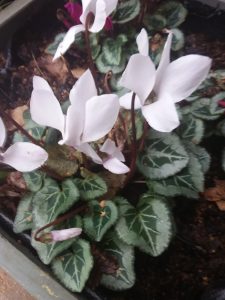Colour and how it can make you feel
Colour has often been associated with emotions. We may say we saw red (anger), feel blue (sad) or green with envy. Therefore, it is not hard to see that colour can affect our emotions or that it can be used to help improve our mental health.
Warm and Cool colours
Colours can be categorised as warm or cool colours. Warm colours are those based on red, orange and yellow. Cool colours are those in the family of green, blue or purple. Our feelings about colour can depend upon our experiences and associations which may include thinking of colourful flowers in the garden which fill us with joy or perhaps disgust of a colour associated with your school uniform.
The Context
It is also important to recognise that colours can be associated with positive or negative emotions which may be determined by the context. Take the examples above, the colour red, in one context may make you feel anger in another love. Similarly, with blue, it could make you feel sad or fill you with joy, as you associate the colour with gliding through an outdoor pool or a beautiful blue sky.
Psychologists have studied colour and emotions. In one study by Jonauskaite et al, (2020), over 4500 participants from 30 different countries took part in a colour psychology test, leading to the researchers drawing a number of conclusions.
- An association was easiest with some colours – like red, black, yellow. Others such as brown were less easy to assign an emotion to.
- One colour was often associated with several emotions. Similarly, the same emotion was linked to several colours.
My Study
I decided to replicate the study with my parents and myself, finding very similar results. The colour red was controversial, according to the study results being associated with love and anger, which Mum and I stated but also hate ( which Dad said ). Similar to the participants in the study we attached negative emotions to brown, black and grey such as fear, sadness, disgust and disappointment. Both Mum and Dad struggled to place an emotion on orange, eventually going for joy/pleasure and relief. For me, I stated interest, it’s a warm colour that piques my curiosity. Mum associated colours with flowers in her garden, thus repeatedly felt joy.
Why is it important to think about how Colour makes you feel?
It is important to think about how colour makes you feel as it helps you to choose clothing and décor which will improve your mood and mental health. For example, if you are wanting a room to be relaxing you may choose colours which are associated with contentment. In the study these colours were blue, green, turquoise and white. (Colours which I associated with contentment. Mum chose similar colours, adding that when she was younger, she would have chosen purple).
Adding Colour to your home
If you are wo rking from home and want to keep yourself motivated and have creative ideas, you may wear or have décor in a colour which you associate with interest. According to the study you would use green, blue, purple but for me it would be orange and Dad turquoise. Adding house plants with green foliage or colourful flowers could have multiple benefits for your mental health. Orchids for example have a variety of coloured flowers. Others you may choose include white Poinsettia, African Violets, Kalanchoe or purple or white Cyclamen.
rking from home and want to keep yourself motivated and have creative ideas, you may wear or have décor in a colour which you associate with interest. According to the study you would use green, blue, purple but for me it would be orange and Dad turquoise. Adding house plants with green foliage or colourful flowers could have multiple benefits for your mental health. Orchids for example have a variety of coloured flowers. Others you may choose include white Poinsettia, African Violets, Kalanchoe or purple or white Cyclamen.
You may of course also want to have pops of joy throughout your house. For me that is the colour yellow and I certainly have shades of yellow, mainly mustard, in my living room, hallway (lemon), kitchen and bedroom. 
I am fascinated by colour. Love colour and how it makes you feel. For me it is thinking about how colours complement or contrast, making one colour shine against another. It really is worth thinking about what colours make you feel joy, contentment, interest or relaxed and include those colours in your surroundings.

